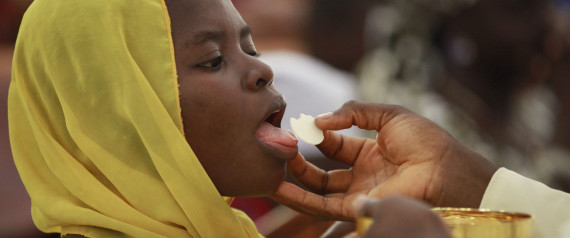How the Church Converted the Pagan West and How We Can Do It Again
by Diane Moczar - published by Catholic Answers, 2012
Forward by Father John McCloskey
Okay, I confess. My two favourite Church historians of this century and the last are the late Warren Carroll and Diane Moczar, the author of this book. Why? Simply because Carroll was and Moczar is a fully credentialed historian who clearly believes that the Catholic Church is the Body of Christ and who makes the history of the Church excitingly page-turning while not being fictional. They write from a faith perspective that recognizes the strengths and weaknesses of the members of the Church, from popes to laymen, who populate their pages, but they recognize that all will be well in the end. After all, we await the Parousia, which we all will experience either in this life or in the life above (we hope!).
This most recent volume by Professor Moczar deals with great conversions to Catholicism through the centuries and down to our own time, conversions that have had an outsized impact not only on the Church but also on the world we live in.
Some of the individual converts were kings who brought all their subjects along for the ride to salvation. Others, like St. Patrick and St. Juan Diego, experienced mystical encounters or inspirations, revelations, or apparitions that changed their lives and won whole nations and even continents to Catholicism.
Or think of St. Ignatius, founder of the Society of Jesus, who converted from a life of sin when he was deprived of the pulp fiction of his era and in desperation picked up some classics of spiritual reading while convalescing from battle wounds. Through his resolute "yes" to Christ the whole Orient was eventually opened to the work of the Holy Spirit.
Of course there are various roads to conversion. Most readers have probably experienced the most common one without any memory of it. This is the sacrament of baptism administered in infancy, thanks to loving parents and to the loving desire of God the Father to adopt newborn children as his own sons and daughters. From the time of the apostles, however, there has been another and often more dramatic experience of conversion, that of previously unbaptized adults. There are, for example, the spectacular conversions of the first centuries of Christianity and the gradual en masse conversion of the barbarian tribes and nations over the course of almost 900 years–among whom the ancestors of most of the readers of this book are included. These conversions produced what we call the West or Christendom.
Thanks to the heroic missionaries and to ongoing globalization, the Church continues to grow and win converts in Africa and the Far East. Yet the West, cradle of the faith, is in serious peril due to scientism, consumerism, practical atheism, mass apostasy, and other ills. Who knows? Perhaps Africa and the Far East will re-evangelize us to return the favour. We have the assurance that the Church will always be here until the Lord comes to judge the living and the dead, but that could be any time from tomorrow to a billion years hence.
Church started with twelve apostles, and in a little more than 2,000 years it has never had a down year; it is always growing, producing new saints and laying new foundations to face the challenges of the age. In his book The Nature and Mission of Theology, Pope Benedict XVI tells us: "This is why in every age the path to faith can take its bearings by converts; it explains why they in particular can help us to recognize the reason for the hope that is in us (1 Pet. 3:15) and to bear witness to it. The connection between faith and theology is not therefore some sort of sentimental or pietistic twaddle but is a direct consequence of the logic of the thing and is corroborated by the whole of history."
Diane Moczar has written a marvellous book about great converts–many of them saints, others not–who changed not just the Church but also the destiny of human civilization. But remember, we live in the present, not the past. In recent years, as many as a million Americans have converted to Catholicism. How did this happen?
It happened in many different ways, tailored to the needs, desires, strengths, and weaknesses of each soul. However, almost all converts testify to having one thing in common: the example of a friend, relative, or co-worker who at some point in their journey asked them Have you ever thought of becoming a Catholic?"
Now, how many times have you asked that question of others? For when you do, when accompanied by prayer and sacrifice and true friendship, you may find yourself an instrument of the Holy Spirit for the conversion of great Catholics who will change the world.

